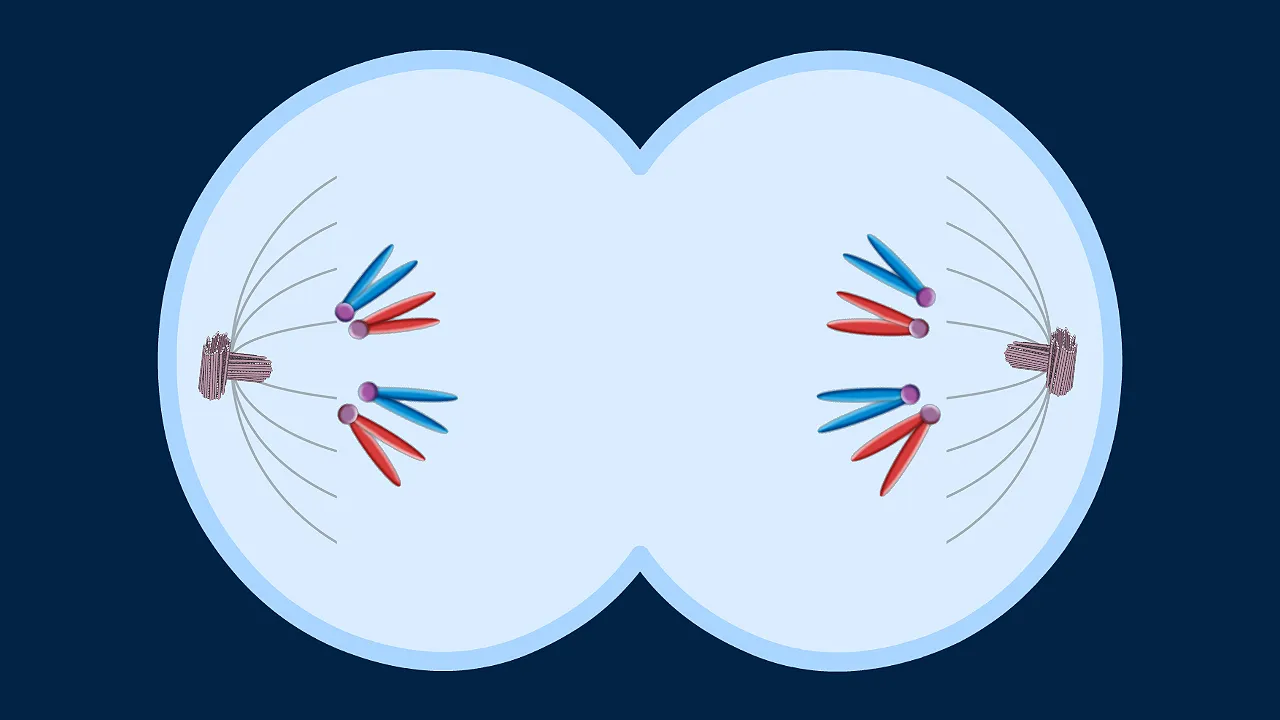
Telophase is a fascinating stage in cell division, often overlooked but crucial for life. During this phase, the cell's chromosomes reach opposite poles, and two new nuclear membranes form around them. This process ensures that each daughter cell receives an identical set of chromosomes. Telophase plays a vital role in both mitosis and meiosis, contributing to growth, development, and reproduction. Understanding this stage can help grasp how cells replicate and repair themselves. Whether you're a student, a teacher, or just curious, these 16 facts will shed light on the importance of telophase in the grand scheme of biology. Ready to dive in? Let's get started!
Key Takeaways:
- Telophase is a crucial stage in cell division where the cell prepares to split into two daughter cells. It ensures genetic stability and prepares for the final step of cell division, cytokinesis.
- Telophase occurs in both mitosis and meiosis, with unique events in each process. It's essential for growth, tissue repair, genetic diversity, and sexual reproduction.
What is Telophase?
Telophase is a crucial stage in cell division, specifically during mitosis and meiosis. During this phase, the cell prepares to split into two daughter cells. Here are some fascinating facts about telophase that will help you understand its importance.
Key Events in Telophase
Understanding the key events that occur during telophase can give a clearer picture of how cells divide and multiply.
-
Nuclear Envelope Reformation: During telophase, the nuclear envelope, which had disintegrated earlier in mitosis, begins to re-form around each set of chromosomes. This process ensures that the genetic material is enclosed within a nucleus in each daughter cell.
-
Chromosome Decondensation: Chromosomes that were tightly coiled and visible during earlier stages of mitosis start to uncoil and become less visible under a microscope. This decondensation marks the transition back to the chromatin state.
-
Spindle Fiber Disassembly: The spindle fibers, which played a crucial role in separating chromosomes, begin to break down and disappear. This disassembly is essential for the cell to complete division.
-
Formation of Nucleoli: Nucleoli, which are small dense structures within the nucleus, reappear during telophase. They play a key role in producing ribosomes, which are essential for protein synthesis.
Telophase in Mitosis vs. Meiosis
Telophase occurs in both mitosis and meiosis, but there are some differences between the two processes.
-
Telophase I in Meiosis: In meiosis, telophase I results in two daughter cells, each with half the number of chromosomes as the original cell. This reduction is crucial for sexual reproduction.
-
Telophase II in Meiosis: During telophase II, four haploid cells are produced, each with a unique set of chromosomes. This genetic diversity is vital for evolution and adaptation.
-
Mitosis Telophase: In mitosis, telophase results in two identical daughter cells, each with the same number of chromosomes as the parent cell. This process is essential for growth and tissue repair.
Importance of Telophase in Cell Cycle
Telophase plays a vital role in ensuring that cell division is completed accurately and efficiently.
-
Ensuring Genetic Stability: By re-forming the nuclear envelope and decondensing chromosomes, telophase ensures that each daughter cell receives an accurate copy of the genetic material.
-
Preparation for Cytokinesis: Telophase sets the stage for cytokinesis, the final step in cell division where the cytoplasm splits, resulting in two separate cells.
-
Cell Cycle Regulation: Proper execution of telophase is crucial for the regulation of the cell cycle. Errors in this phase can lead to genetic abnormalities and diseases such as cancer.
Visualizing Telophase
Observing telophase under a microscope can provide valuable insights into the cell division process.
-
Microscopic Appearance: During telophase, the cell appears to have two distinct nuclei as the nuclear envelopes re-form around the separated chromosomes.
-
Fluorescent Staining: Scientists often use fluorescent stains to highlight chromosomes and other cellular structures during telophase, making it easier to study the intricate details of cell division.
Telophase in Different Organisms
Telophase can vary slightly between different types of organisms, reflecting the diversity of life.
-
Plant Cells: In plant cells, a cell plate forms during telophase, eventually developing into a new cell wall that separates the two daughter cells.
-
Animal Cells: Animal cells undergo a process called cleavage furrow formation during telophase, where the cell membrane pinches inwards to divide the cell into two.
-
Fungal Cells: Some fungi exhibit unique telophase characteristics, such as the formation of a septum that separates the daughter cells.
Telophase and Medical Research
Research on telophase has significant implications for medicine and biotechnology.
- Cancer Research: Understanding telophase can help scientists develop treatments for cancer, as errors in this phase can lead to uncontrolled cell division and tumor formation.
Final Thoughts on Telophase
Telophase, the final stage of mitosis, is crucial for cell division. During this phase, chromosomes reach opposite poles, nuclear envelopes reform, and the cell prepares to split into two. This process ensures that each daughter cell receives an identical set of chromosomes, maintaining genetic consistency. Understanding telophase helps us grasp how cells replicate and repair, which is vital for growth and healing. It's fascinating how this microscopic event has such a significant impact on our overall health. By studying telophase, scientists can develop treatments for diseases related to cell division, like cancer. So, next time you think about cell division, remember telophase's role in keeping our bodies functioning smoothly. It's a small but mighty part of life's intricate puzzle.
Frequently Asked Questions
Was this page helpful?
Our commitment to delivering trustworthy and engaging content is at the heart of what we do. Each fact on our site is contributed by real users like you, bringing a wealth of diverse insights and information. To ensure the highest standards of accuracy and reliability, our dedicated editors meticulously review each submission. This process guarantees that the facts we share are not only fascinating but also credible. Trust in our commitment to quality and authenticity as you explore and learn with us.
